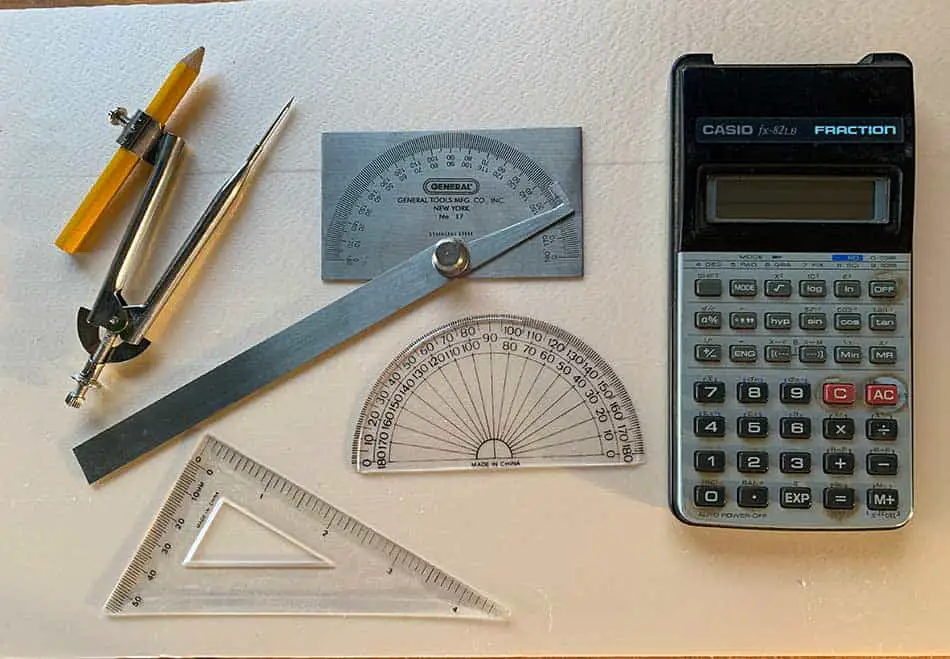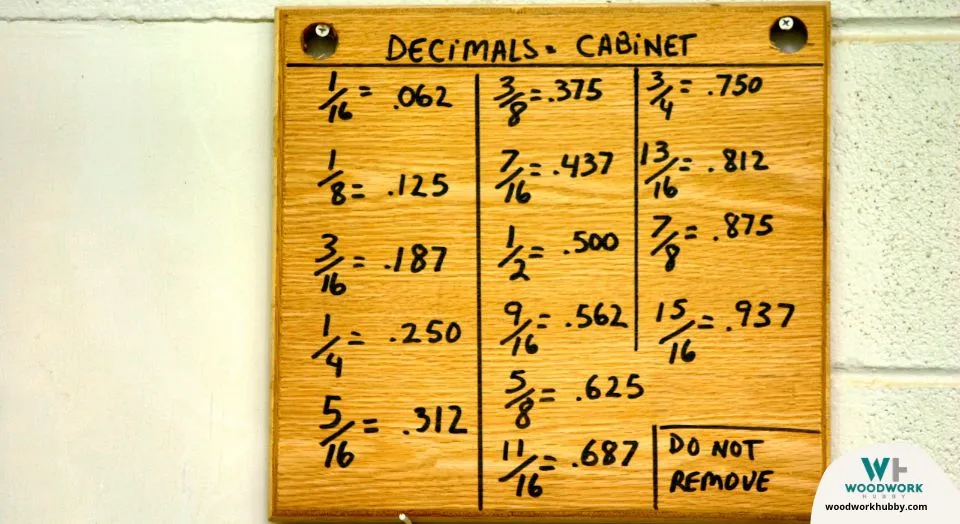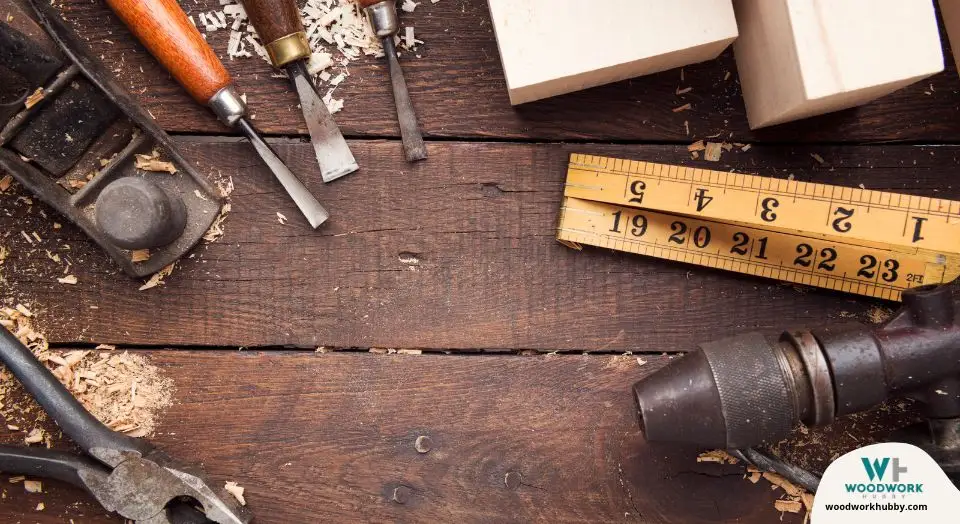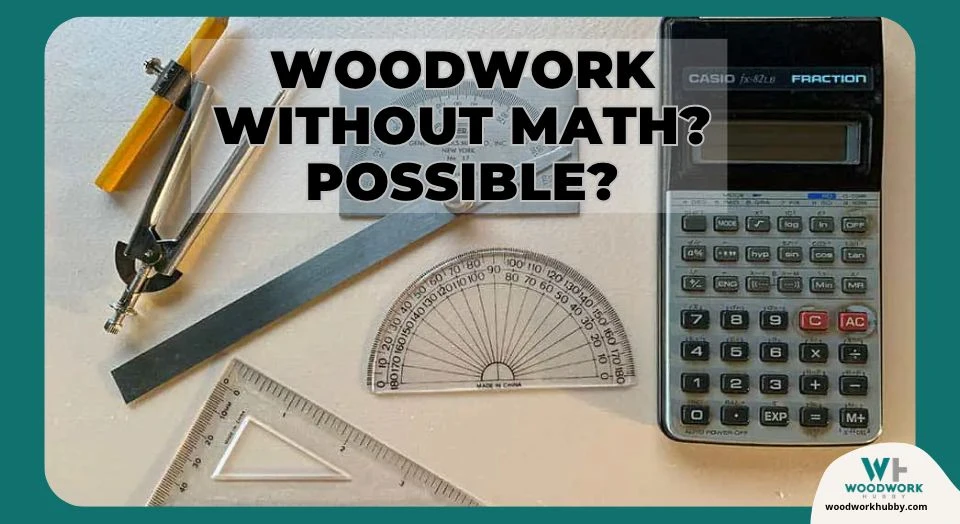You’ve never considered yourself much of a math whiz. You passed grade-school level math classes just fine, but not easily. Today, you work in a job that doesn’t require heavy use of mathematics.
That said, you’ve recently decided to take up woodworking, which several friends have told you involves math. Does woodworking involve math?
Yes, woodworking is quite mathematical. You must not only know basic math such as decimals and fractions but more advanced concepts such as geometric shapes and angles as well. Otherwise, your woodworking projects won’t be accurate.
Although many people think math isn’t fun, harnessing the power of mathematics will make you a far better and more talented woodworker.
Ahead, we’ll elaborate on which math concepts you should learn. Think of this as your math 101 class. Further down in this article, A link to a youtube video that will be very useful to you.
Let’s get started!
What Kind of Math Do You Need to Know to Be a Good Woodworker?

Geometric Shapes
In woodworking, you will create many projects of all shapes and sizes. Without understanding geometric shapes, it’s hard to visualize what your project will look like and get it to the exact dimensions you want.
Let’s talk about geometric shapes a bit. A geometric shape is defined as any area or figure that has lines, points, and/or curves that allow the boundary to close. The most common geometric shapes are squares, rectangles, circles, and triangles.
A square is considered a regular quadrilateral in geometric terms. Its angles, of which there are four, are all equal. Its sides are equal as well. Squares have four sides and internal angles of 90 degrees.
Rectangles are like longer squares, but geometrically, they’re known as quadrilaterals. Each of their four corners is a right angle, making a rectangle an equiangular quadrilateral as well. This is just another way of saying that each corner is 90 degrees.
A circle has rounded, curvy sides rather than straight, pointy ones like a square or rectangle. Each point on its plane is at the same distance from the circle’s center point.
Triangles have three vertices and edges. Different types of triangles exist, such as:

- Isosceles triangle: If two sides of the triangle are the same length, then it’s an Isosceles triangle.
- Acute triangle: A longer and leaner triangle, an acute triangle has angles that add up to 180 degrees. Two angles are acute and the third is obtuse.
- Right triangle: The right triangle features one right angle of 90 degrees, typically in the corner. The other side is considered the hypotenuse.
- Equilateral triangle: As the name suggests, equilateral triangles have equal angles on all three sides. These are typically 60-degree angles.
- Equiangular triangle: All vertex angles are the same with an equiangular triangle.
Geometric shapes also include parallelograms and polygons. A parallelogram has two opposite sides that are parallel to one another. Polygons are non-curved shapes with lines and mostly closed parts.
Examples of polygons are decagons (with 10 sides), nonagons (with 9 sides), octagons (with 8 sides), heptagons (with 7 sides), hexagons (with 6 sides), pentagons (with 5 sides), quadrilaterals, and triangles.
Angles

Many geometric shapes feature angles, but angles are also worth discussing on their own. Getting the precise angle correct when building a woodworking project like a shelf or a bookcase is absolutely necessary, so make sure you study up.
What is an angle? When two sides or rays meet at a vertex or endpoint of a figure, these are angles. Outside of plane geometry, angles are sometimes defined as a measure of rotation as related to a length ratio to the circular arc of a radius.
If you thought you were done with terms like obtuse and acute after learning geometric shapes, these terms come back to describe the types of angles as well. Here’s what you need to know.
- Full rotation: A full rotation angle is 360 degrees, hence the rotation this angle is named after.
- Reflex angle: Any angle that surpasses 180 degrees is known as a reflex angle.
- Straight angle: When an angle measures exactly 180 degrees, it’s a straight angle.
- Obtuse angle: An obtuse angle is between 90 and 180 degrees. This angle exceeds 90 degrees but doesn’t quite reach 180 degrees.
- Right angle: As we talked about with triangles, a right angle is precisely 90 degrees.
- Acute angle: Any angle that’s less than 90 degrees is an acute angle.
Knowing which angle is which will make cutting your wood far simpler. For example, if you wanted to divide a right angle (or one that’s 90 degrees) when woodworking, you could use a straightedge to make a line down the middle of the corner. Then, with a miter saw, split the corner to get two 45-degree angles.
Decimals
Did you pay attention in algebra class? If so, then you may remember decimals. If that lesson is foggy by now, then here’s your recap. A decimal is a number with a fractional part and a whole number part punctuated by a period or a decimal point. Any number after the decimal has a value that’s less than 1.

Let’s take a random number with a decimal, 45.6. In this instance, the 4 represents the tens, the 5 represents the ones, and the 6 is tenths. You always want your decimal between the ones and tenths.
In woodworking, when you make measurements for your project, you might sometimes find your calculation returns a decimal point. Understanding what each number before and after that decimal point means will keep your measurements exact so your project comes out right.
In some scenarios, you might even opt to round up the decimal point. If you’re going to do that, then your number must have at least two digits after the decimal point. For example, instead of 45.6, let’s say your number was 45.61 instead.
Any digit after the tenths that is under 5 in value means you do not round up the tenths number. So 45.61 would still round out to 45.6.
If your number was now 45.67, since 7 is greater than 5, you’d round up to 45.7. The same is true if your number was 45.68.
In determining the number to round up to, you always take the number in the tenths spot and add 1.
Fractions
Besides decimals, you could also stumble across fractions when following woodworking tutorials online or even coming up with your own recipes. Fractions are a little more difficult to understand than decimals, but not impossible by far.

To grasp how fractions work, think about a pizza pie. It’s sliced into 8 pieces, all of equal size. When your fraction reads something like 3/8, that’s three-eighths of the pizza pie.
What does this mean? The top number, or the 3, is how many slices remain. The bottom number, or 8, tells you how many slices the pizza is cut into.
One-quarter or ¼ means there are 4 slices of pizza and 1 slice remains. This slice is going to be bigger than when comparing a fraction like 3/8ths because there were only ever 4 slices instead of 8, but you’re still comparing a circle of the same size.
One-half or ½ is only 2 slices of pizza, with a single slice remaining. Think of it like this: if you ordered a pizza and, with your pizza cutter, split the whole thing down the middle and said that’s 2 pieces, that’s what ½ looks like visually.
Resources for Learning Math in Woodworking
The above descriptions of mathematical concepts involved in woodworking should be a good starting point for you. If at any point, you find you need more detailed instruction, we gathered up a few resources you can rely on.
Popular Woodworking Practical Shop Math
The book Popular Woodworking Practical Shop Math by Tom Begnal was published in 2006. Begnal’s book explores many of the same woodworking-related math concepts we covered in this post, among them geometric shapes, angles, decimals, and fractions.
With Begnal’s guidance, the Popular Woodworking book is supposed to teach you how to set your woodworking machine to the correct speed, how to take a piece of furniture and transfer its dimensions to a drawing, and how to determine the quantities of wood needed for all sorts of projects.
You can get the book on Amazon as a spiral-bound or hardcover.
Math in Woodworking Series On YouTube
RRR Woodworks is a YouTube channel that hosted the Math in Woodworking series. Across four episodes, you can learn all sorts of handy woodworking concepts. The first episode centers around using dados to calculate dimensions.
In the second episode, RRR Woodworks covers using decimals and fractions for precision wood-cutting. The third episode discusses trigonometry and how it can help you determine the right angle for cutting wood. The fourth and last episode is about tree height for if you ever cut down a tree to obtain your own wood.
While there are only four episodes, each is about 10 minutes and rife with information you’ll surely use. Plus, YouTube is a free instructional resource, which makes it great to learn from.
Carpentry Math
The third resource we recommend for new woodworkers learning math is the website Carpentry Math. You can refresh your memory on geometric shapes, angles, and more on this site, using formulas to do your own calculations.
The cool thing about Carpentry Math is how they also offer calculators as well as plans for woodworking projects. These include bird feeders, birdhouses, benches, picnic tables, and even a deck or set of stairs. It’ll soon be time to get building!
Conclusion
If you weren’t great at math in school, it’s never too late to learn. You will need to know math concepts involving geometry, algebra, and trigonometry to excel at woodworking. With the information and resources in this article, you’re well on your way to becoming a math master and thus a better woodworker. Good luck!




